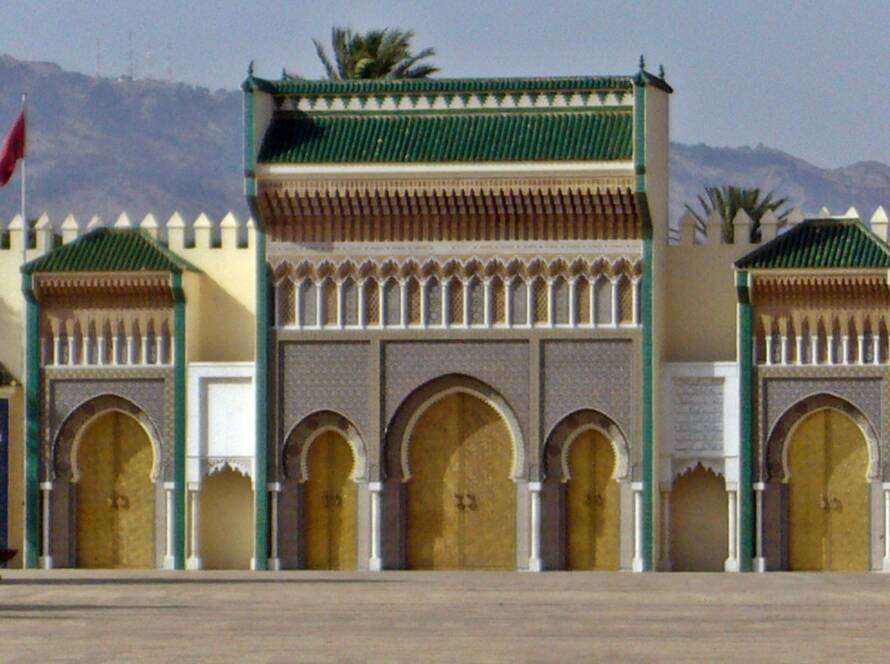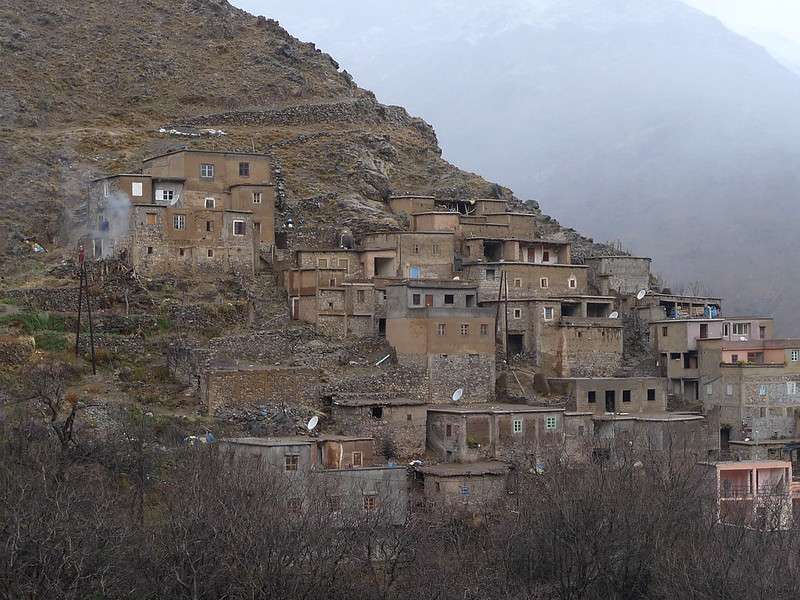Ksar of Ait-Ben-Haddou:
The ksar, a group of earthen buildings surrounded by high walls, is a traditional pre-Saharan habitat. The houses crowd together within the defensive walls, which are reinforced by corner towers. Ait-Ben-Haddou, in Ouarzazate province, is a striking example of the architecture of southern Morocco.
Located in the foothills on the southern slopes of the High Atlas in the Province of Ouarzazate, the site of Ait-Ben-Haddou is the most famous ksar in the Ounila Valley. The Ksar of Aït-Ben-Haddou is a striking example of southern Moroccan architecture. The ksar is a mainly collective grouping of dwellings. Inside the defensive walls which are reinforced by angle towers and pierced with a baffle gate, houses crowd together – some modest, others resembling small urban castles with their high angle towers and upper sections decorated with motifs in clay brick – but there are also buildings and community areas. It is an extraordinary ensemble of buildings offering a complete panorama of pre-Saharan earthen construction techniques. The oldest constructions do not appear to be earlier than the 17th century, although their structure and technique were propagated from a very early period in the valleys of southern Morocco. The site was also one of the many trading posts on the commercial route linking ancient Sudan to Marrakesh by the Dra Valley and the Tizi-n’Telouet Pass. Architecturally, the living quarters form a compact grouping, closed and suspended. The community areas of the ksar include a mosque, a public square, grain threshing areas outside the ramparts, a fortification and a loft at the top of the village, an caravanserai, two cemeteries (Muslim and Jewish) and the Sanctuary of the Saint Sidi Ali or Amer. The Ksar of Ait- Ben-Haddou is a perfect synthesis of earthen architecture of the pre-Saharan regions of Morocco.
Criterion (iv): The Ksar of Ait-Ben-Haddou is an eminent example of a ksar in southern Morocco illustrating the main types of earthen constructions that may be observed dating from the 17th century in the valleys of Dra, Todgha, Dadès and Souss.
Criterion (v): The Ksar of Ait-Ben-Haddou illustrates the traditional earthen habitat, representing the culture of southern Morocco, which has become vulnerable as a result of irreversible socio-economic and cultural changes
Authenticity (2009)
In comparison to other ksour of the region, the Ksar of Ait-Ben-Haddou has preserved its architectural authenticity with regard to configuration and materials. The architectural style is well preserved and the earthen constructions are perfectly adapted to the climatic conditions and are in harmony with the natural and social environment.
The large houses in the lower part of the village, with well conserved decorative motifs, are regularly maintained. The construction materials used still remain earth and wood. The inclination to introduce cement has so far been unsuccessful, thanks to the continued monitoring of the «Comité de contrôle des infractions» (Rural Community, Town Planning Division, Urban Agency, CERKAS). Only a few lintels and reinforced concrete escaped its vigilance, but they have been hidden by earthen rendering. Particular attention is also paid to doors and windows giving on to the lanes, to ensure that the wood is not replaced by metal.
Protection and management requirements (2009)
Protection measures essentially relate to the different laws for the listing of historic monuments and sites, in particular the Law 22-80 concerning Moroccan heritage. The Ksar of Ait-Ben-Haddou currently has a five-year management plan (2007-2012). This management plan is the result of two years of reflection and workshops involving all the persons and institutions concerned with the future of the site, in particular the local populations. The recommendations of this plan are being implemented. Furthermore, two management committees have been established (a local committee and a national one) in which all the parties are represented and cooperate in decision-making. As well as managing the property, CERKAS ensures coordination in the implementation of this management plan



